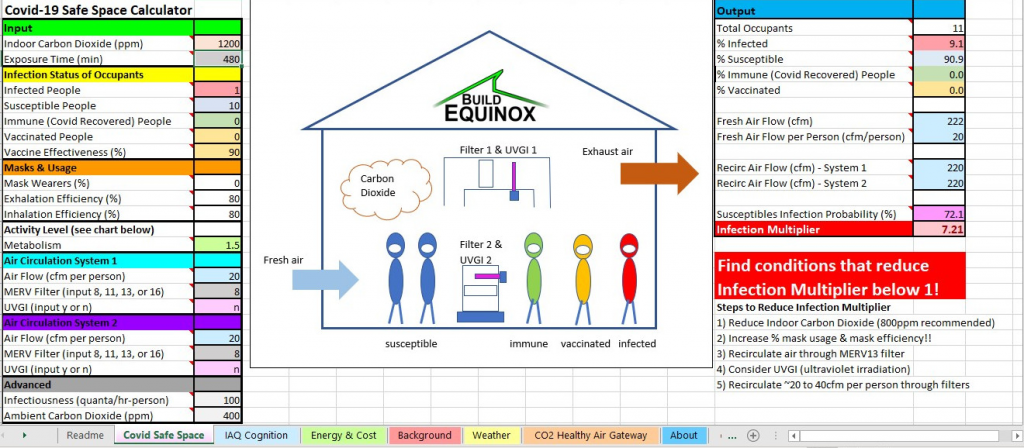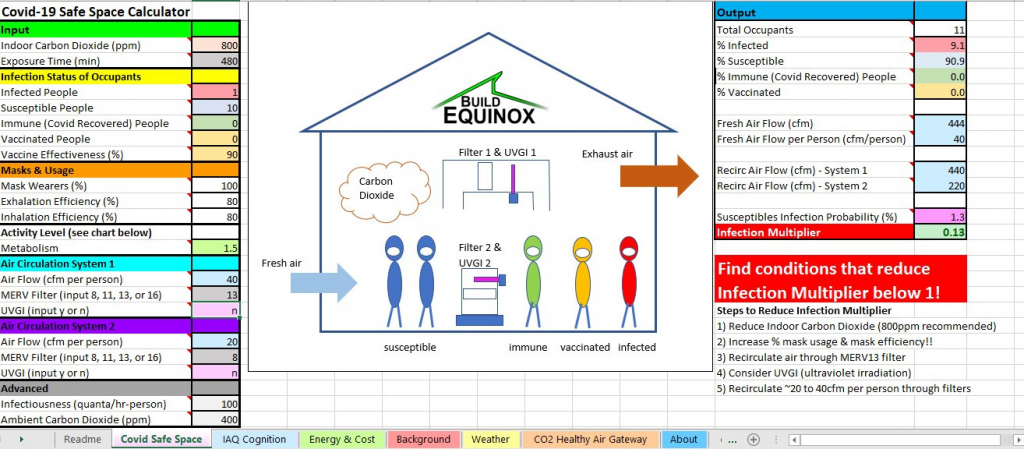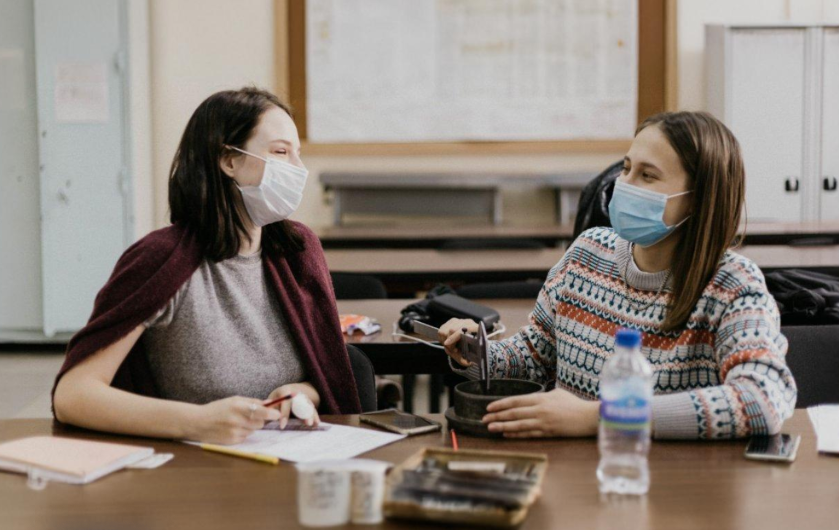Build Equinox published specific recommendations (Build Equinox May 2020 newsletter) for making indoor environments safer and healthier. Now, we provide you with the ability to determine how to make your indoor environments safer and healthier with our Covid Safe Space IAQ calculator. The calculator is downloadable as a Google sheets application.
tableDownload: COVID Safe Space Calculator
descriptionInstructions: COVID Safe Space Calculator
You do not need to be an engineer, an experienced HVAC technician, an architect or building professional to use the Covid Safe Space (CSS) calculator. Our intended audience ranges from high school students to elderly, so you can determine what makes an indoor space safe for you, your family, friends, customers, employees, students, residents, visitors, and everyone.


The CSS calculator is meant to be a communication platform among the different stakeholders of an indoor environment. For example, Figure 1 shows stakeholders for safe re-opening of classrooms to consist of teaching staff, parents, students, administrators, and facilities staff. Restaurant stakeholders (Figure 2) might consist of restaurant owner, employees, suppliers, and most importantly, its customers. The CSS calculator allows stakeholders to find practical pathways to design a Covid safe space.

What is a Covid Safe Space? Two example screen shots show results for a typical office with 11 people working together for 8 hours. Figure 3 shows CSS calculator results for “normal” indoor conditions (ASHRAE standard ventilation, MERV 8 filtration, no face mask usage). Covid susceptible office workers are 72% likely to catch the disease if one of their co-workers is infectious. In this environment, one infectious person is likely to infect 7 other co-workers who will then carry the disease home, to the store, to school, and to other places they visit.

Figure 4 shows results for a Covid Safe Space office environment. Combined contributions of increased fresh air ventilation (40cfm per person for 800ppm carbon dioxide concentration), improved air filtration (40cfm per person air recirculation through a MERV 13 filter), and 100% mask usage reduces the probability of catching Covid from 72% to 1%, and reduces the number of transmissions (“Infection Multiplier”) from an infectious person from 7 to 0.1. When the Infection Multiplier (also known as the Reproduction number, Ro, in epidemiology) is reduced below 1, “Herd Immunity” is achieved and a disease disappears.
In the words of Ron Popeil, “But wait, there’s more!”. Additional worksheets estimate building occupant dissatisfaction with air quality, building occupant sick days per year, changes in human productivity, summer/winter ventilation energy loads, and utility cost. You may be interested to know the value of improved human performance exceeds energy costs by a lot.
Typical results show that Covid Safe Spaces reduce building occupant air quality dissatisfaction from 20% (typical for ASHRAE 62.1/62.2 ventilated buildings and homes) to 10%. Sick days are estimated to decrease by 40 to 50%, and cognition productivity is increased by 10%. For customer oriented businesses, 20% air quality dissatisfaction means a lot of business you may be losing to a competitor with better air quality. If you are an employer, reducing sickdays by 40% is both a reduction of cost and an increase of productivity. Increasing cognition performance by 10% means more work completed, better decisions, increased creativity, and improved problem solving. And most importantly, a human value increase of $1 to $2 per hour per person for a cost of only 1 to 2 cents per hour per person for improved ventilation in harsh climates!
Background information for the science and technology behind the CSS calculator can be found in our recently posted report (Indoor SARS-CoV-2 Herd Immunity and Infection Probability Estimates Based on Ventilation, Vaccination, Infections and Face Masks). Several references are included for those interested in further depth.
Related
tableDownload: COVID Safe Space Calculator
descriptionInstructions: COVID Safe Space Calculator
newspaperSpecial Edition: Ventilation, Vaccination, Infection, and Luck. Covid-19 and the New Year
newspaperBuild Equinox Groundbreaking Research into COVID 19
























